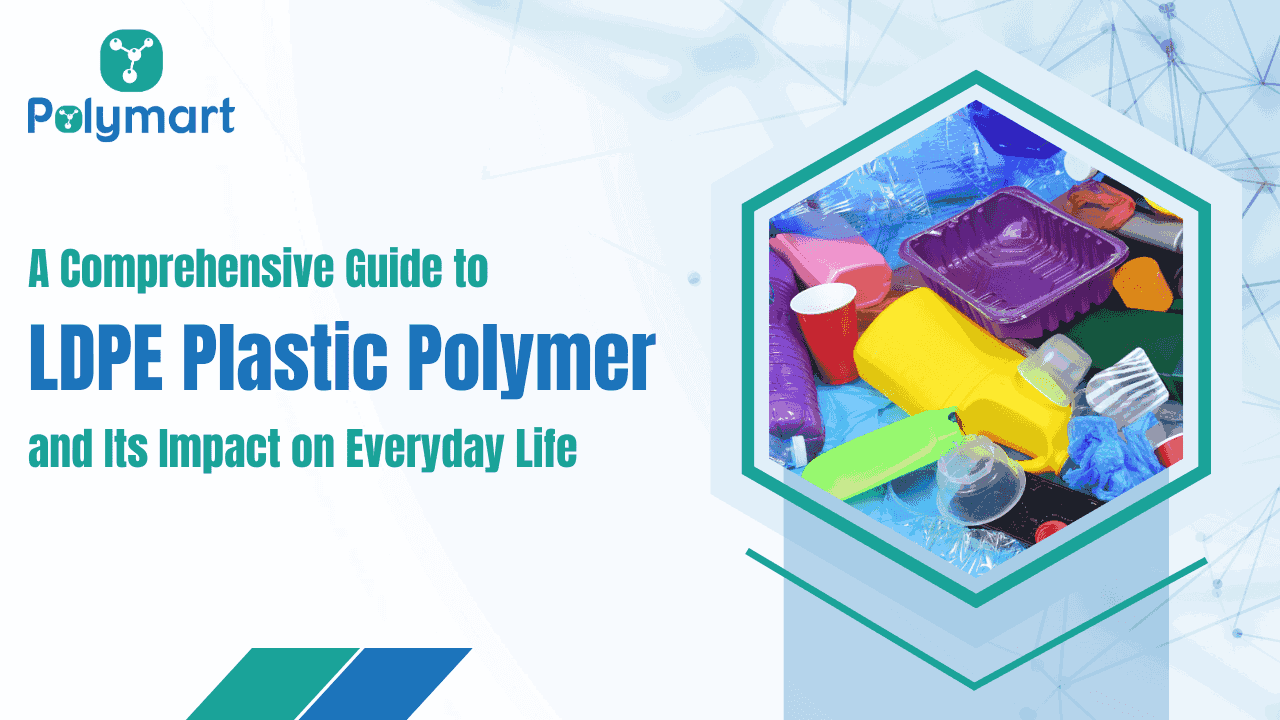
Would you be interested in gaining an understanding of the material behind plastic bags and various other everyday items? Plastics have become an integral part of our daily lives, with various types of plastic polymers dominating the market. One such type is Low-Density Polyethylene (LDPE), a versatile plastic polymer that has found its way into countless applications. From packaging to construction, LDPE offers unique properties that make it a go-to choice for many industries.
As a prominent polymer distribution company in India, we have compiled an article. In this comprehensive guide, we will delve deep into Low-density polyethylene plastic, learning about its composition, properties, and applications. Get ready to learn the significance of LDPE and find a convenient way to buy polymers online.
The Fundamentals of LDPE Plastic Polymer
The thermoplastic low-density polyethylene (LDPE) is made from the monomer ethylene. It was the initial grade of polyethylene, created in 1933 by M.W. Perrin and Dr. John C. Swallow. The process of producing polyethylene is known as free radical polymerization. Because this process necessitates high temperatures and high pressures (1000-3000 atm), it is usually carried out in large batches in an autoclave or tubular reactor.
This branching gives LDPE its signature flexibility and ductility due to its lower crystallinity, making it quite different from more linear varieties of polyethylene like high-density polyethylene (HDPE) and linear low-density polyethylene (LLDPE)
Moreover, a resin number code “4” within an arrow triangle indicates LDPE on plastic products. Due to its impressive properties, it is widely used in products like bags, containers, and cling wraps for grocery shopping. If you are interested in buying and sell polymers online, the PolyMart App is for you.
The Properties of LDPE Polymer
There are several key properties that make LDPE, or Low-Density Polyethylene, desirable for many applications. Some of these remarkable properties are:
- The density range for LDPE is 917-930 kg/m3.
- It can tolerate temperatures as high as 90 °C (194 °F) for brief periods of time and as low as 65 °C (149 °F) continuously.
- It is both flexible and durable.
- The melting point of LDPE plastic polymer usually ranges from 102°C to 115°C.
- Low density polyethylene has generally a shore hardness of around 40-50.
- Available in translucent and opaque finishes.
- At the completion of 212 days’ incubation, methane was detected at 5.8 nmol g-1 d-1, ethylene at 14.5 nmol g-1 d-1, ethane at 3.9 nmol g-1 d-1, and propylene at 9.7 nmol g-1 d-1.
- HDPE has more branching than LDPE (on about 2% of the carbon atoms), so its intermolecular forces are weaker.
- In tests on Low Density Polyethylene, the tensile strength ranged from 7.85 to 34.5 MPa, and the yield strength was found to be 17.5 MPa
Note – These values do not necessarily represent any particular grade, especially less common values and those impacted by additives or processing methods.
The Pros and Cons of LDPE Plastic Polymer
The following are the pros and cons of using low-density polyethylene- LDPE plastic polymer material:
Pros of LDPE Plastic
- Easy to mold and process
- Excellent chemical resistance properties
- Weatherproof qualities
- Low-water absorption
- Lightweight, flexible, and odourless raw plastic material
- 100% recyclable
- Cost-effective
The low density polyethylene plastic, LDPE, is ideally suited to the manufacture of packaging materials in many industries. In case you are a polymer processor looking to buy polymers online in India, download the PolyMart Buyer App. The App keeps you updated on the latest price trends, allowing you to make the best decision possible.
Cons of LDPE Plastic
- Highly flammable
- Poor UV resistance
- Easily prone to stress cracking
- High gas permeability
- Lower strength compared to other polymers
- May have environmental implications if not recycled properly
- Relatively limited temperature resistance
Generally, LDPE is not suited for applications where stiffness, high-temperature resistance, and structural strength are required. If you are considering selling polymers online – the PolyMart Seller App has you covered. PolyMart App is a one-stop platform to buy and sell polymers online.
The Applications of LDPE Plastic Polymer:
Low Density Polyethylene is seen to be non-toxic and has properties that are attractive for applications in packaging materials. Thanks to its low density and high strength, very thin sheets of LDPE can be used to hold relatively high loads. This combined with its low cost and recyclability makes it an excellent choice for a range of high-production volume applications, some of which are listed below:
LDPE in the Food Packaging Industry – Water bottles, juice containers, bread packages, frozen food, flexible lids, garbage bags, milk cartons, etc.
LDPE in the Healthcare Industry – Pharmaceutical packaging, syrup bottles, disposable injection, IV bags, medical or cleanroom equipment, etc.
LDPE in the Construction Industry – Construction film, LDPE sheets, insulation materials, pipe coating, etc.
LDPE in the Agriculture Industry – Greenhouse film, plastic drip tape, water pipes, mulch film, and other plastic irrigation products.
Conclusion
Whether it’s in packaging, agriculture, healthcare, or construction, Low density polyethylene (LDPE) continues to serve as a reliable and versatile material. As we continue our journey of innovation and sustainability, LDPE will undoubtedly play a significant role in shaping our future. So next time you come across that plastic bag or flexible tubing, remember the unassuming LDPE polymer that makes it all possible.
However, when it comes to sourcing polymer materials, finding a genuine polymer supplier is crucial. PolyMart is one of the leading polymer distribution channels providing buying and selling polymer services on one platform. PolyMart App has everything you need to meet your specific application needs, including LDPE, HDPE, PVC, PET, and PP. To buy polymers online hassle-free, download the PolyMart buyer app and contact our team.